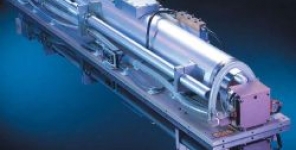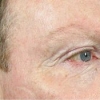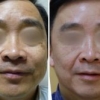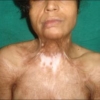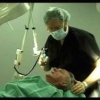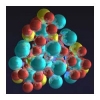Onicomicosi delle unghie dei piedi trattate con laser frazionato ad anidride carbonica e crema topica antimicotica
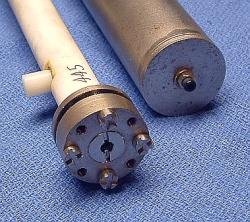 La farmacoterapia tradizionale per l'onicomicosi ha un'efficacia modesta ed è spesso gravata da reazioni avverse ed interazioni farmacologiche che ne limitano il suo uso in molti pazienti.
La farmacoterapia tradizionale per l'onicomicosi ha un'efficacia modesta ed è spesso gravata da reazioni avverse ed interazioni farmacologiche che ne limitano il suo uso in molti pazienti.
Obiettivo
In questo articolo abbiamo valutato l'efficacia e la sicurezza clinica di un laser frazionato ad anidride carbonica in associazione alla terapia antifungina topica per il trattamento dell'onicomicosi.
Metodi
In tutto, 24 pazienti sono stati trattati con il laser frazionato ad anidride carbonica e con una crema topica antimicotica. Il trattamento laser ha previsto 3 sedute ad intervalli di 4 settimane l'una dall'altra. Infine, l'efficacia è stata valutata sulla base del tasso di risposta in base alle fotografie standardizzate, all'esame microscopico dei detriti subungueali e alle valutazioni soggettive.
Risultati
Tra i pazienti, il 92% ha mostrato una risposta clinica e il 50% ha mostrato una risposta completa con un risultato negativo alla microscopica. I fattori che hanno influenzato l'esito positivo del trattamento sono stati il tipo di onicomicosi e lo spessore della lamina ungueale prima del trattamento. Nel complesso, il regime terapeutico è stato ben tollerato e non ci sono state recidive per almeno 3 mesi dall'ultima sessione di trattamento.
Limitazioni
Lo studio ha seguito solo 24 pazienti e non ci sono stati rilevanti controlli.
Conclusioni
La terapia con laser frazionato ad anidride carbonica — in combinazione ad un agente antimicotico topico — è risultata efficace per il trattamento dell'onicomicosi. Pertanto, deve essere considerato come un'opzione terapeutica alternativa nei pazienti in cui sono controindicati gli agenti antifungini sistemici.
Storia della pubblicazione:
Titolo: Toenail onychomycosis treated with a fractional carbon-dioxide laser and topical antifungal cream
Rivista: Journal of the American Academy of Dermatology. Volume 70, Issue 5, Pages 918–923, May 2014
Autori: Eun-Hwa Lim, Hyeong-rae Kim, Young-Ok Park, Young Lee, Young-Joon Seo, Chang-Deok Kim, Jeung-Hoon Lee, Myung Im
Affiliazioni:
Abstract:
Background Traditional pharmacotherapy for onychomycosis has low to moderate efficacy and may be associated with adverse reactions and medication interactions limiting its use in many patients. Objective We evaluated the clinical efficacy and safety of a fractional carbon-dioxide laser with topical antifungal therapy in the treatment of onychomycosis. Methods In all, 24 patients were treated with fractional carbon-dioxide laser therapy and a topical antifungal cream. The laser treatment consisted of 3 sessions at 4-week intervals. Efficacy was assessed based on the response rate from standardized photographs, a microscopic examination of subungual debris, and subjective evaluations. Results Among the patients, 92% showed a clinical response and 50% showed a complete response with a negative microscopic result. The factors that influenced a successful outcome were the type of onychomycosis and the thickness of the nail plate before treatment. The treatment regimen was well tolerated and there was no recurrence 3 months after the last treatment episode. Limitations The study followed up only 24 patients and there were no relevant treatment controls. Conclusions Fractional carbon-dioxide laser therapy, combined with a topical antifungal agent, was effective in the treatment of onychomycosis. It should be considered an alternative therapeutic option in patients for whom systemic antifungal agents are contraindicated.
